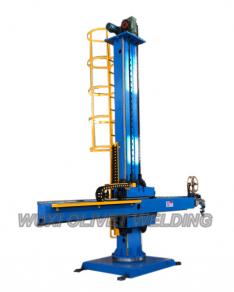
E-mail:sales@chinaolivet.cn

Welding Robots Will Promote The Development Of Welding Automation In The Future
In recent years, China’s industry is undergoing a “robotization” revolution, especially in the field of arc welding. Welding robots will be the future trend to promote the development of welding automation. This article will discuss the advantages of welding robots in the field of automated production. Welding robots suppliers will give you a brief introduction.
With the advancement of science and technology, people have higher and higher requirements for welding quality. Automated production requires reducing manpower, improving product consistency, and improving product quality, making it more suitable for mass production, reducing production costs, and improving production efficiency. In manual welding, it is difficult to maintain the stability and consistency of the welding work for a long time due to the influence of objective and subjective factors such as technical level, fatigue degree, sense of responsibility, physiological limit, etc. Moreover, due to the poor working conditions of welding, the number of people willing to do manual welding is decreasing, and there is a tendency for a shortage of skilled workers. It can be said that welding robots largely meet the requirements of welding automation.

(1) Stabilize and improve welding quality and ensure its uniformity. Welding parameters such as welding current, voltage, welding speed, and dry elongation have a decisive effect on welding results. When using robot welding, the welding parameters of each welding seam are constant, and the quality of the welding seam is less affected by human factors, which reduces the requirements for the operation technology of the workers, so the welding quality is stable. In manual welding, the welding speed, dry elongation, etc. are all changed, and it is difficult to achieve uniform quality.
(2) Improved working conditions. With robot welding, workers only need to load and unload the workpiece, which is far away from welding arcs, fog, and splashes. For spot welding, workers do not need to carry heavy manual welding tongs, freeing workers from high-intensity manual labor.
(3) Improve labor productivity. The robot can be produced continuously for 24 hours. With the application of high-speed and high-efficiency welding technology, the use of robot welding has improved efficiency more significantly.
(4) The product cycle is clear and it is easy to control the product output. The production cycle of the robot is set at the same time, so the production plan is very clear.
(5) Shorten the cycle of product modification and replacement and reduce the corresponding equipment investment. The welding automation of small-batch products can be realized.
The biggest difference between a robot and a special machine is that the program can be modified to adapt to the production of different workpieces. Of course, the advantages of welding robots are far more than that. With the continuous development of welding automation technology, the replacement of manual operations by welding robots will become more and more obvious, which is also the future development trend.
Wuxi OLIVET Machinery Equipment Co.,LTD.E-mail: sales@chinaolivet.cnTel: +86-510-8383 0908
Home About UsProductsQuality ControlCompany NewsContact Us Sitemap
Copyright©2015 Wuxi OLIVET Machinery Equipment Co.,Ltd. Technical Support: Reanod